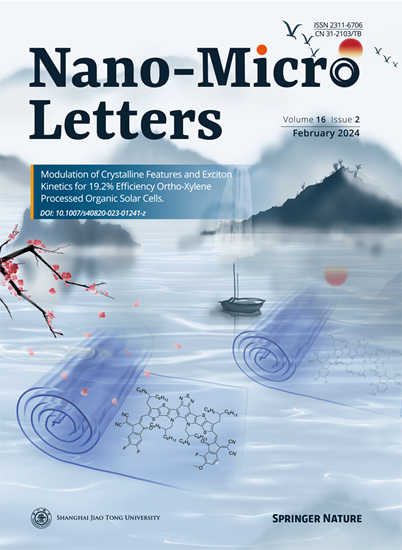在多孔碳负载的Ni-ZnO纳米颗粒上溶剂调节5-羟甲基糠醛选择性加氢的一种有前途的策略。
IF 36.3
1区 材料科学
Q1 Engineering
引用次数: 0
摘要
将生物质平台化合物开发成高附加值化学品是可再生资源利用的关键步骤。本文报道了采用低温共沉淀法合成多孔碳负载Ni-ZnO纳米催化剂(Ni-ZnO/AC),该催化剂在5-羟甲基糠醛(HMF)的选择性加氢反应中表现出优异的性能。首次观察到溶剂极性(ET(30))与极性非质子和质子溶剂类的产物选择性之间存在线性相关性,表明溶剂性质在指导反应途径中起着至关重要的作用。其中,1,4-二氧六环(非protic)以97.5%的选择性促进2,5-二(羟甲基)呋喃(BHMF)的生成,而异丙醇(iPrOH, protic)以高达99.5%的选择性促进2,5-二甲基呋喃的生成。机理研究进一步表明,除了极性之外,质子提供能力在促进氢脱氧中起着至关重要的作用。iPrOH使氢穿梭机制,其中质子协助羟基去除,降低活化屏障。相比之下,1,4-二恶烷缺乏氢键供体,稳定BHMF并阻碍进一步转化。密度泛函理论计算证实,iPrOH的活化能(0.60 eV)低于1,4-二氧六烷(1.07 eV)。这项工作为生物质加氢过程中溶剂介导的产物选择性控制提供了机制见解和实用策略,突出了溶剂-催化剂-底物相互作用的决定性作用。本文章由计算机程序翻译,如有差异,请以英文原文为准。
A Promising Strategy for Solvent-Regulated Selective Hydrogenation of 5-Hydroxymethylfurfural over Porous Carbon-Supported Ni-ZnO Nanoparticles.
Developing biomass platform compounds into high value-added chemicals is a key step in renewable resource utilization. Herein, we report porous carbon-supported Ni-ZnO nanoparticles catalyst (Ni-ZnO/AC) synthesized via low-temperature coprecipitation, exhibiting excellent performance for the selective hydrogenation of 5-hydroxymethylfurfural (HMF). A linear correlation is first observed between solvent polarity (ET(30)) and product selectivity within both polar aprotic and protic solvent classes, suggesting that solvent properties play a vital role in directing reaction pathways. Among these, 1,4-dioxane (aprotic) favors the formation of 2,5-bis(hydroxymethyl)furan (BHMF) with 97.5% selectivity, while isopropanol (iPrOH, protic) promotes 2,5-dimethylfuran production with up to 99.5% selectivity. Mechanistic investigations further reveal that beyond polarity, proton-donating ability is critical in facilitating hydrodeoxygenation. iPrOH enables a hydrogen shuttle mechanism where protons assist in hydroxyl group removal, lowering the activation barrier. In contrast, 1,4-dioxane, lacking hydrogen bond donors, stabilizes BHMF and hinders further conversion. Density functional theory calculations confirm a lower activation energy in iPrOH (0.60 eV) compared to 1,4-dioxane (1.07 eV). This work offers mechanistic insights and a practical strategy for solvent-mediated control of product selectivity in biomass hydrogenation, highlighting the decisive role of solvent-catalyst-substrate interactions.
求助全文
通过发布文献求助,成功后即可免费获取论文全文。
去求助
来源期刊

Nano-Micro Letters
NANOSCIENCE & NANOTECHNOLOGY-MATERIALS SCIENCE, MULTIDISCIPLINARY
CiteScore
32.60
自引率
4.90%
发文量
981
审稿时长
1.1 months
期刊介绍:
Nano-Micro Letters is a peer-reviewed, international, interdisciplinary, and open-access journal published under the SpringerOpen brand.
Nano-Micro Letters focuses on the science, experiments, engineering, technologies, and applications of nano- or microscale structures and systems in various fields such as physics, chemistry, biology, material science, and pharmacy.It also explores the expanding interfaces between these fields.
Nano-Micro Letters particularly emphasizes the bottom-up approach in the length scale from nano to micro. This approach is crucial for achieving industrial applications in nanotechnology, as it involves the assembly, modification, and control of nanostructures on a microscale.
 求助内容:
求助内容: 应助结果提醒方式:
应助结果提醒方式:


